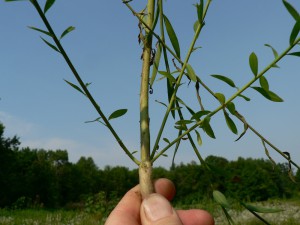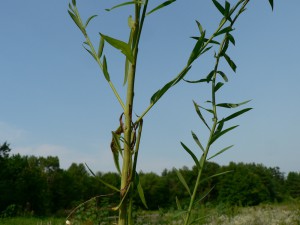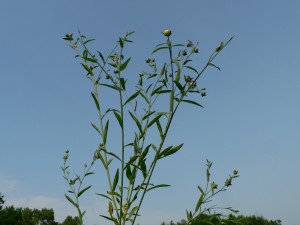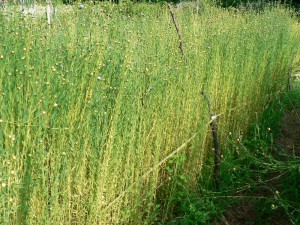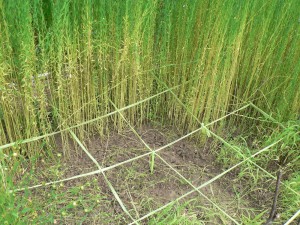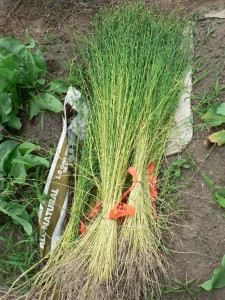In the last post I forgot to show these images of a particularly robust v.n.s. plant. The thicker stalks tend to be around the edges of the plot. This is one of the reasons, I imagine, that people usually recommend against planting in row. If you have a continuous plot, you have less edge-area relative to your total square feet. However, I can’t reach in to weed anything wider than 4 feet. If you don’t weed, in my experience, the weeds overwhelm the flax.
However, you can see several undesirable characteristics here from a fiber point of view. For one thing, it’s a very thick stalk.
Here you can see branching at the bottom of the stalk. This may reduce the length of potential bast fiber by a couple inches. Whatever extends down into the root is presumably going to detach from the rest below the branches, though again it’d be good to see this under a microscope to see what’s really going on.
Branching in the middle of the stalk.
And branching at the top. If it’s true that the fibers will break apart after retting at each point where there’s a branch, then this plant will produce a lot of short, coarse fiber.
Because there was a significant difference in size/thickness between the stalks, I organized the bundles somewhat by size. Presumably the thinner stalks will require a shorter retting time, though I guess this remains to be seen.
In contrast to the v.n.s., the Evelin was tall and straight, and was barely affected by lodging.
Above you can see the grid section of the Evelin bed as I harvested. Note the relative absence of tangled and curved stems. This is what flax is supposed to look like, in my opinion.
These bundles are much more typical of past flax harvests. The height is great, stems are nice and straight, and not too much branching.

